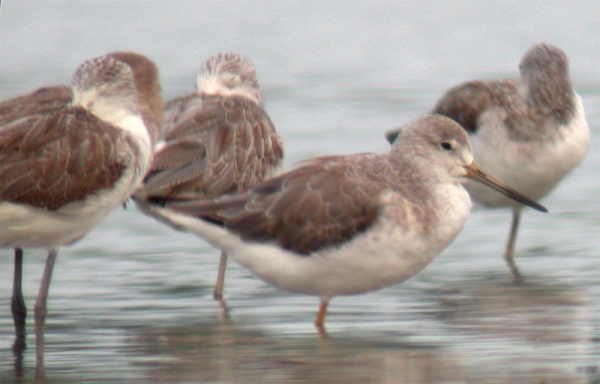Facts About Nordmann's greenshank
Nordmann's greenshank, also known as the spotted greenshank, is a captivating medium-sized sandpiper belonging to the Scolopacidae family. This bird is easily recognizable by its slightly upturned, two-toned bill, short yellow legs, and distinctive body markings. During the breeding season, adults stand out with their whitish spots, spangled black upper parts, streaked head and neck, and crescent-shaped markings on the lower neck and breast. They also feature darker lores, contributing to their unique appearance.
These birds breed in eastern Russia, specifically along the coasts of the Sea of Okhotsk and on Sakhalin Island. Outside the breeding season, they migrate to diverse regions, including South Korea, mainland China, Hong Kong, Taiwan, and several Southeast Asian countries such as Thailand, Cambodia, and Vietnam. Their range also extends to Japan, North Korea, India, Sri Lanka, Myanmar, Singapore, the Philippines, and Indonesia, with unconfirmed sightings in Nepal and Guam. With an estimated population of just 500 to 1,000 individuals, Nordmann's greenshank is classified as endangered.
Interestingly, Nordmann's greenshank was previously classified under the genus Pseudototanus. It shares some similarities with other wader groups such as semipalmata-flavipes, stagnatilis-totanus-glareola, as well as the greater yellowlegs and common greenshank. However, this species was not included in a 2005 molecular analysis of the genus Tringa, leaving some questions about its genetic relationships unresolved.

 Cambodia
Cambodia